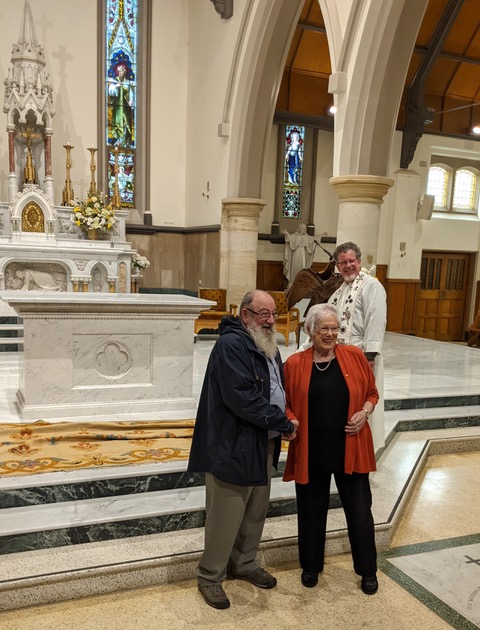FROM 1973 to 1984, Bathurst local Monica Morse lived in Port Moresby, Papua New Guinea, where her husband was posted to head the CSIRO research into the screw-worm fly, a pest of cattle. They lived in Airvos Avenue, where, during Monica’s involvement with a group of expatriate women who were interested in embroidery and handcrafts, she met Lady Rachel Cleland, the wife of Sir Donald Cleland. Sir Donald was Administrator of Papua New Guinea from 1951 until 1966. Sir Donald and Lady Cleland stayed on in Papua New Guinea, where he died in 1975, two weeks before Papua New Guinea’s independence ceremonies. Monica recalls meeting Sir Donald Cleland as an old man who watched her small baby with interest. Lady Cleland was involved in organisations such as the Red Cross, Girl Guides Association of Papua New Guinea, Country Women’s Association, and Young Women’s Christian Association (YWCA) and had the idea of starting a business in which she could sell handicrafts made by the women in Port Moresby. She found a small shop in Lawes Road, Port Moresby and suggested Monica go and have a look at the premises. When she visited the little store, there was a tapestry rug on the floor which Monica suggested to Lady Cleland was too good to be walked on as a floor mat. She told her that she had acquired it from the Yule Island Mission, though she didn’t have much of a story about it apart from the fact that it was an Altar Front and had been made by the nuns of the Sacred Heart Mission. Yule Island is a small island off the coast of Papua New Guinea about 160 kilometres from Port Morseby on the south coast of the country. It was settled by missionaries of the Sacred Heart community in 1885 and was known as the cradle of the Catholic faith in Papua New Guinea. Today it is still a thriving Catholic community that has given rise to many priestly and religious vocations and has given birth to three dioceses: the Diocese of Bereina, The Diocese of Kerema and the Archdiocese of Port Moresby. Lady Cleland had tried to wash the tapestry, which caused some of the colours to run, but Monica felt that such an important piece of work should be kept safe. And it has been kept very safe in Bathurst, where Monica has lived since 1984. Monica recently have decided that it should be returned to the Mission of the Sacred Heart, now known as MSC, where she felt it really did belong. The Altar Front was presented to Fr Roger Purcell msc, director of the MSC Mission Office, Australia, on Saturday, April 20 at the Cathedral of St Michael and St John, Bathurst, whereThe Very Reverend Paul Devitt, Vicar General of the Diocese of Bathurst, conducted a short service to accompany the Alter Front.
THE first Catholic missionaries arrived on Yule Island 131 years ago. In 1885, the first priest, Fr Henry Varius, and brothers Nicholas and Salvatori arrived on the island. They came from France to Australia, to NSW and then to Thursday Island and from there, they went to Yule Island on June 30. When the priest and brothers first arrived, the villagers were very friendly and peaceful. Two days after their arrival, Fr Varius went up a hill, erected a small hut and celebrated the first mass. When the priest was performing a consecration, a wild pig ran out from the bushes and knocked the table over and everything spilt onto the land. Catholics believed that because the wine was consecrated, it transformed into the blood of Christ. When it spilt, the place became sacred. The hilltop is now recognised as holy grounds by Catholics. It is where many people go on pilgrimages and spiritual journeys to seek healing, redemption and reconciliation. A monument was built on that very spot on the hill to commemorate the first mass celebrated on the island. After the arrival of Fr Varius and the two brothers, other missionaries began arriving some years later. On August 7, 1887, other missionaries, including Our Lady of the Sacred Heart sisters and brothers from the De La Salle order, arrived. When they came, they set up schools and health centres and provided other important services. The sisters set up a girls’ high school that saw young women from Kerema, Central and Milne Bay come to have an education here. The De La Salle brothers set up a teachers’ college which is now a primary school. Many of the first missionaries who went to the island died at a very early age and were buried on the island. They sacrificed a lot while doing their work. They suffered hunger, malaria, black fever and other related health conditions. The remains of the first sisters’ convent, the father’s house and the brothers’ house are still there.

PRESENTATION: Monica Morse with Father Roger Purcell and the Very Reverend Paul Devitt at the hand over of the Altar Front tapestry at the Cathedral of St Michael and St John

SPECIAL: Part of the tapestry.
